The rich story of head wraps and their profound connection to textured hair, particularly in dry climates, speaks volumes about ancestral wisdom and enduring resilience. These coverings are far more than mere accessories; they are archives of heritage, each fold and fabric telling tales of ingenuity, survival, and celebration. For generations, Black and mixed-race communities have navigated environments where moisture, that precious lifeblood for our curls and coils, feels perpetually elusive.
In such settings, the humble head wrap ascends to a place of reverence, acting as a silent, yet powerful, guardian against the ravages of arid air. This exploration uncovers how these ancestral practices stand as pillars of holistic hair care, deeply informed by a scientific understanding of textured hair’s unique needs, a knowing passed down through the ages.

Roots
The journey of textured hair through arid landscapes is a narrative etched into the very helix of its structure, a story interwoven with the earliest human migrations and ingenious adaptations. From the expansive savannas of ancient Africa to the sun-baked soil of the American South, our hair has faced relentless atmospheric challenges. How, then, did our ancestors safeguard their crown, that vibrant expression of identity, in environments that seemed designed to strip it of its very life force? The answer resides within a profound understanding of the hair itself, coupled with time-honored practices that science now affirms.
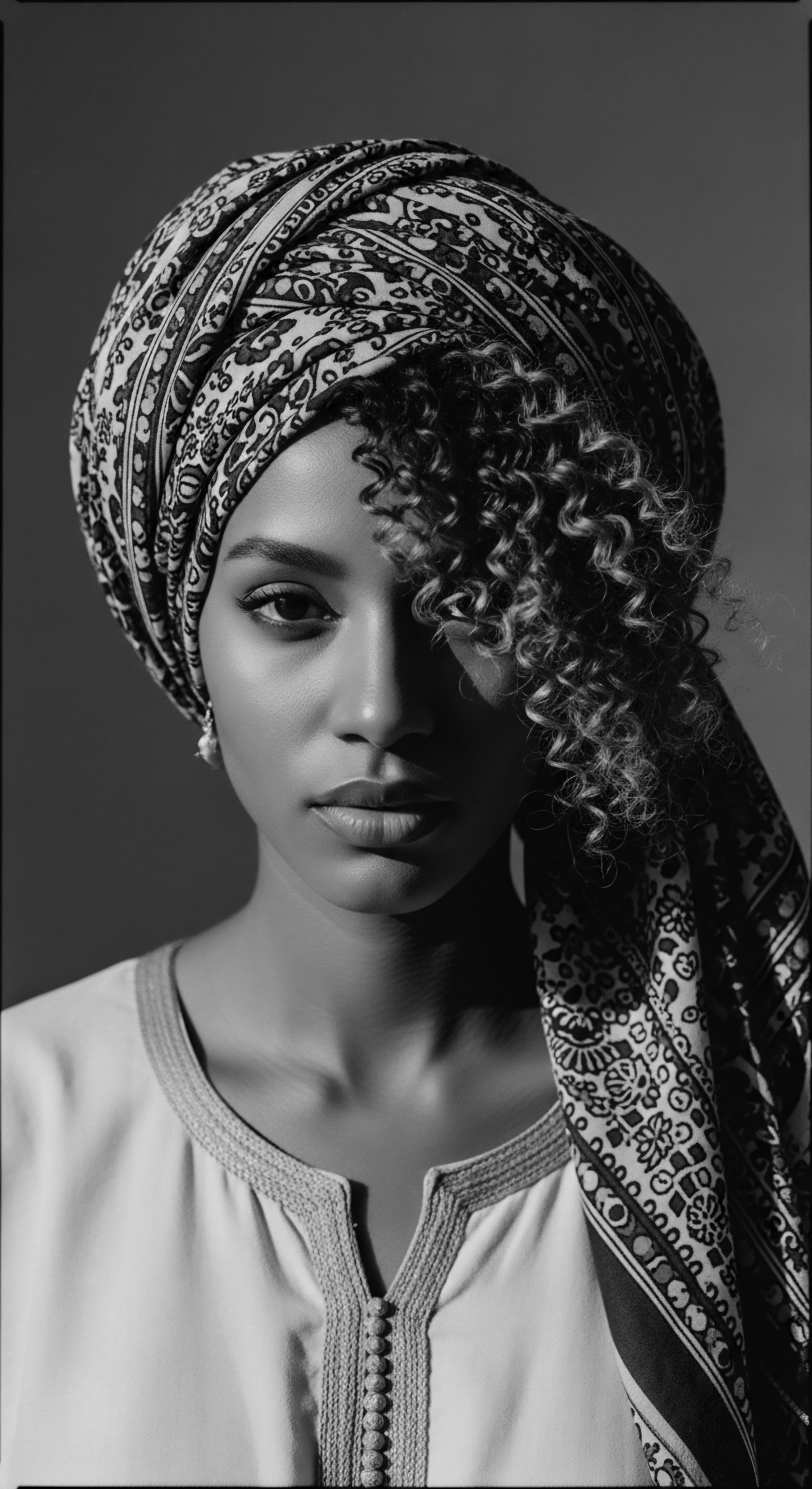
Hair’s Elemental Architecture in Dry Climates
At its core, textured hair, particularly those patterns ranging from wavy to tightly coiled, possesses a distinct architecture. Unlike straight strands, which often lie flat, the elliptical shape of a textured hair shaft causes it to curl and bend. This curvature, while beautiful, creates natural points of weakness along the strand and means that the cuticle, the hair’s outermost protective layer, does not lie as smoothly. This inherent openness allows moisture to escape more readily into the thirsty air, making textured hair inherently prone to dryness, especially in low-humidity environments.
Imagine a river flowing through a winding canyon; the water, in its many turns, is more exposed to evaporation than a straight, uninterrupted flow. Our hair, in its glorious twists and turns, faces a similar environmental exposure. This foundational understanding, though articulated in modern scientific terms, was implicitly known by generations who observed their hair’s behavior across seasons and landscapes.
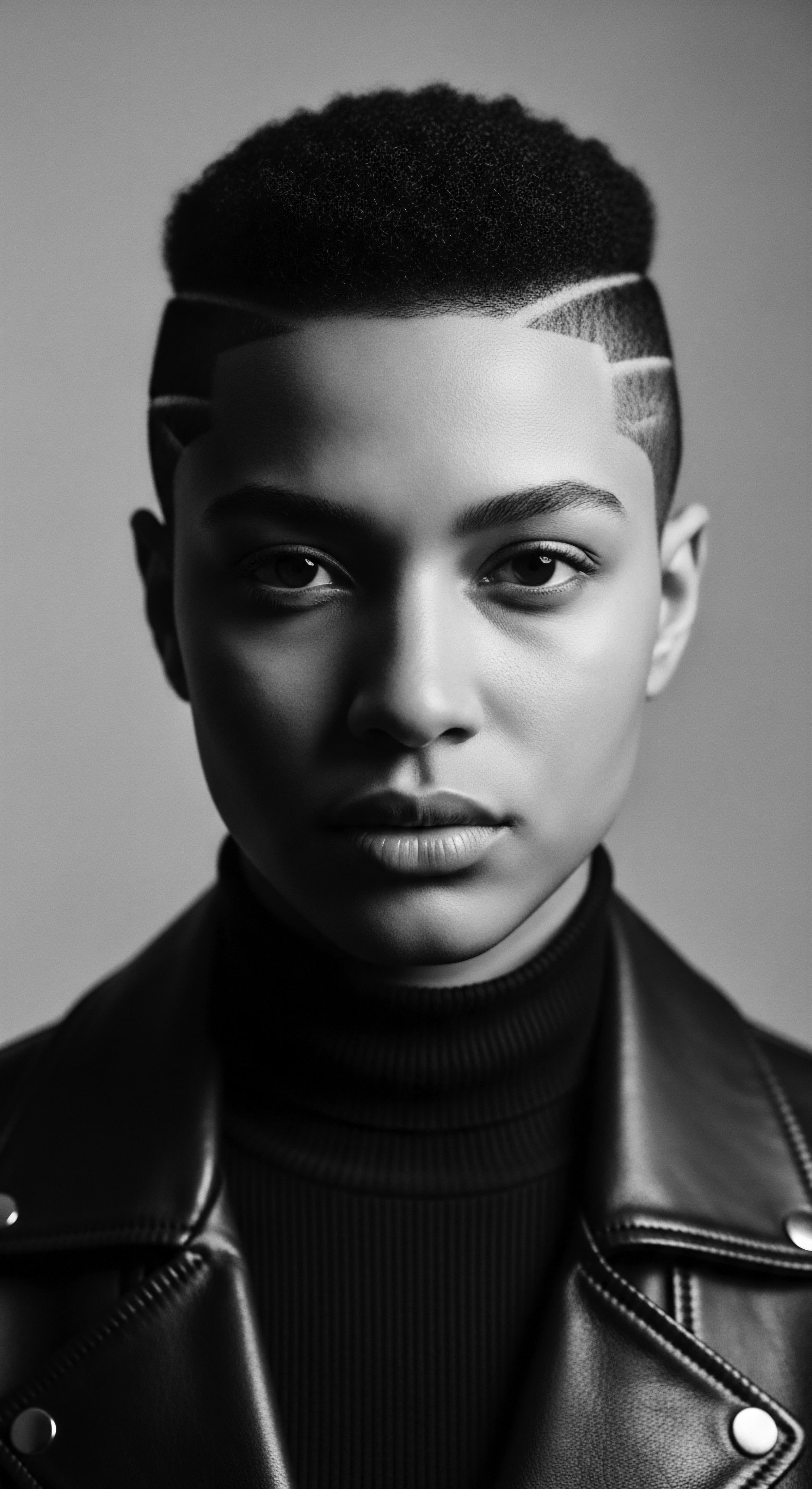
Ancestral Knowledge of Moisture Loss
Long before microscopes revealed the secrets of the cuticle, ancestral communities possessed a deep, empirical knowledge of hair’s response to its surroundings. They understood that dry air pulls water from anything exposed to it. In regions like the Sahel, where hot, dry winds prevail for much of the year, survival hinged on adapting to environmental realities. Protecting the hair was not merely an aesthetic choice; it became a practical imperative for maintaining its integrity and health.
The earliest head coverings, fashioned from natural fibers, likely arose from this fundamental observation ❉ covering the hair minimized direct exposure to desiccating elements. This practical application of observation forms the very first layer of wisdom regarding head wraps and moisture retention. The Basara women of Chad, for instance, in their long-standing practice of using Chebe powder (a mixture of herbs and resins), would apply this moisture-sealing blend to their hair before braiding it, often for days, keeping it protected from harsh conditions. This tradition speaks volumes about an ancient, sophisticated system of hair care deeply attuned to climate.
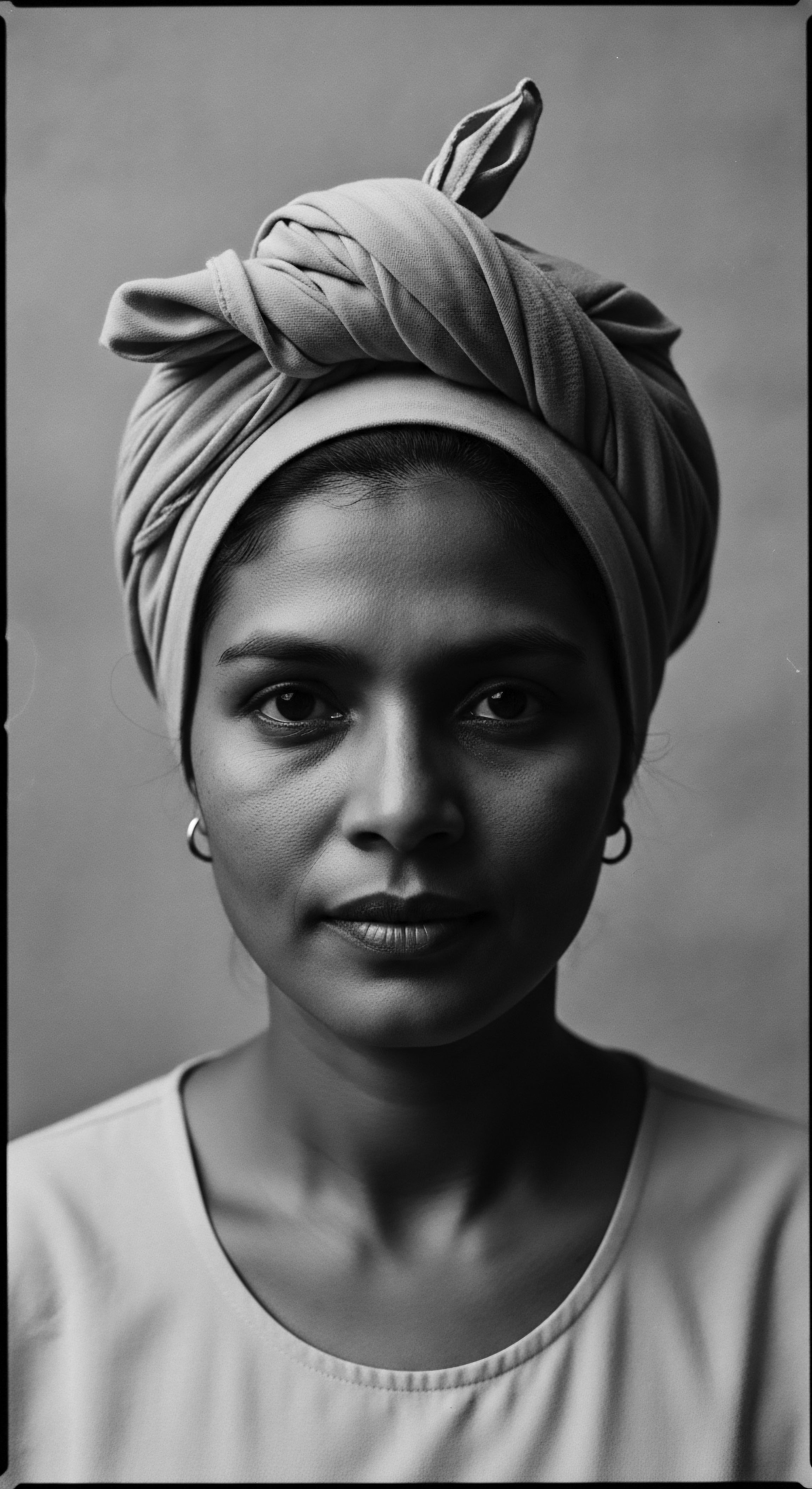
The Protective Role of Early Wrappings
The earliest forms of head wraps were likely simple coverings, yet their efficacy was immediate. By creating a physical barrier, these early wraps reduced the surface area of hair exposed to the sun and wind, slowing the rate of moisture evaporation. Think of it as creating a microclimate around the hair, a small, humidified sanctuary in an otherwise parched world. This wasn’t a complex scientific formula, but an intuitive response born from generations living in harmony with their environment.
The selection of materials, too, evolved over time, with communities favoring fabrics that offered both breathability and an ability to hold moisture, reflecting a subtle, yet profound, material science practiced long before laboratories existed. The very act of wrapping established a protective cocoon, allowing any applied oils or butters to remain on the hair for longer, enhancing their occlusive properties.
The ancient practice of head wrapping offered an intuitive solution to textured hair’s natural predisposition for dryness, forming a protective barrier against harsh climates.
| Hair Characteristic Curl Pattern |
| Ancestral Observation Hair twists and curls; seems to dry faster than straighter hair types. |
| Modern Scientific Understanding Elliptical shaft creates raised cuticles, increasing surface area for moisture escape. |
| Hair Characteristic Dryness in Arid Air |
| Ancestral Observation Hair becomes brittle, less pliable, and breaks more easily in dry seasons. |
| Modern Scientific Understanding Low atmospheric humidity draws water molecules from hair strands via osmosis. |
| Hair Characteristic Effect of Direct Sun |
| Ancestral Observation Sun exposure causes hair to feel harsher, less vibrant. |
| Modern Scientific Understanding UV radiation degrades hair proteins, weakens disulfide bonds, and opens cuticles. |
| Hair Characteristic Wind Damage |
| Ancestral Observation Wind tangles hair, makes it feel rough and susceptible to breakage. |
| Modern Scientific Understanding Physical abrasion from wind friction lifts cuticles, leading to moisture loss and damage. |
| Hair Characteristic This table highlights the enduring wisdom of traditional hair care, where direct observation of environmental impact on hair guided protective practices long before scientific validation. |
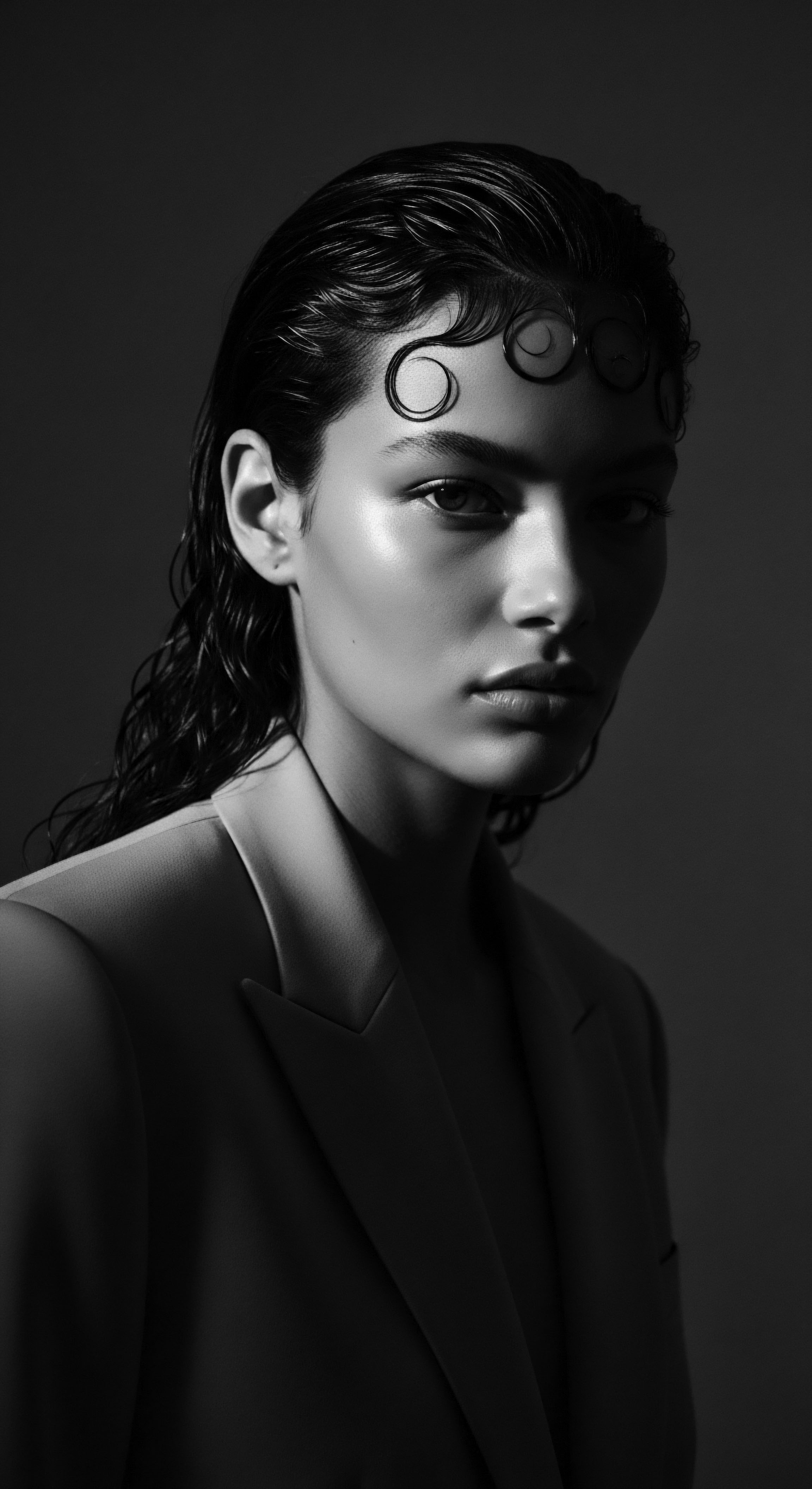
Ritual
The journey of the head wrap from a practical tool to a symbol imbued with profound cultural significance is a testament to its enduring power. It moves beyond mere function, stepping into the realm of ritual, where care for hair becomes intertwined with identity, community, and the preservation of heritage. In dry climates, this ritual takes on an even deeper resonance, as the act of wrapping becomes a deliberate, tender gesture of protection and self-affirmation against environmental hardship.
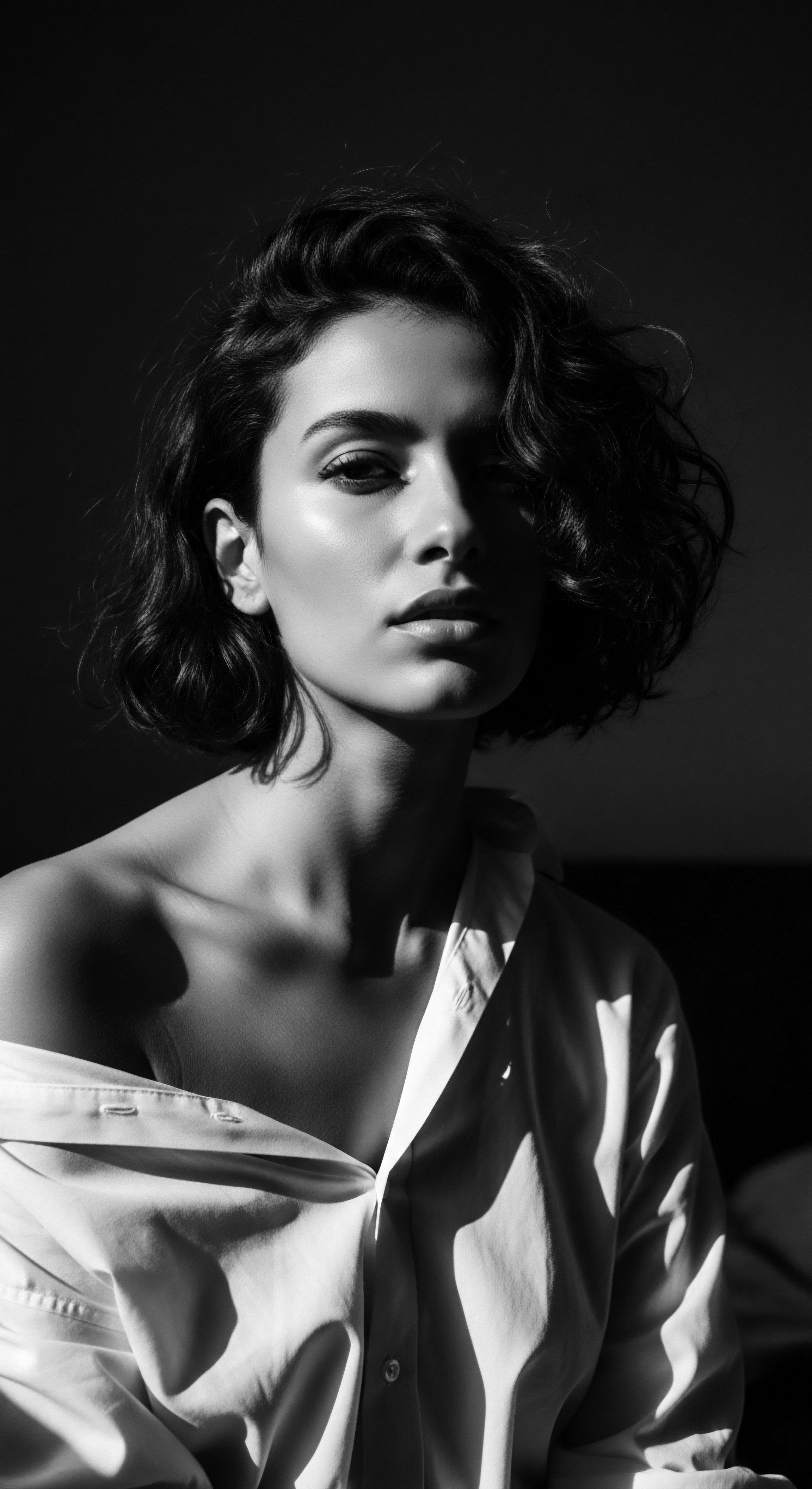
Styling as a Protective Act in Ancestral Traditions
Across various African societies and throughout the diaspora, styling textured hair was rarely a fleeting activity. It was, and remains, a practice often rooted in a desire to shield the hair from daily wear and tear, and crucially, from the desiccating effects of sun and wind. Head wraps served as a primary form of protective styling, especially when venturing outdoors into arid conditions. Styles such as braids and twists, often worn underneath wraps, were not only artistic expressions but also ways to minimize manipulation and consolidate strands, reducing surface area exposure.
Women in ancient Kemet, for instance, adorned intricate braids and then covered them, preserving both style and moisture. This foresight in styling, coupled with the strategic use of head coverings, allowed for healthier hair in challenging climates.
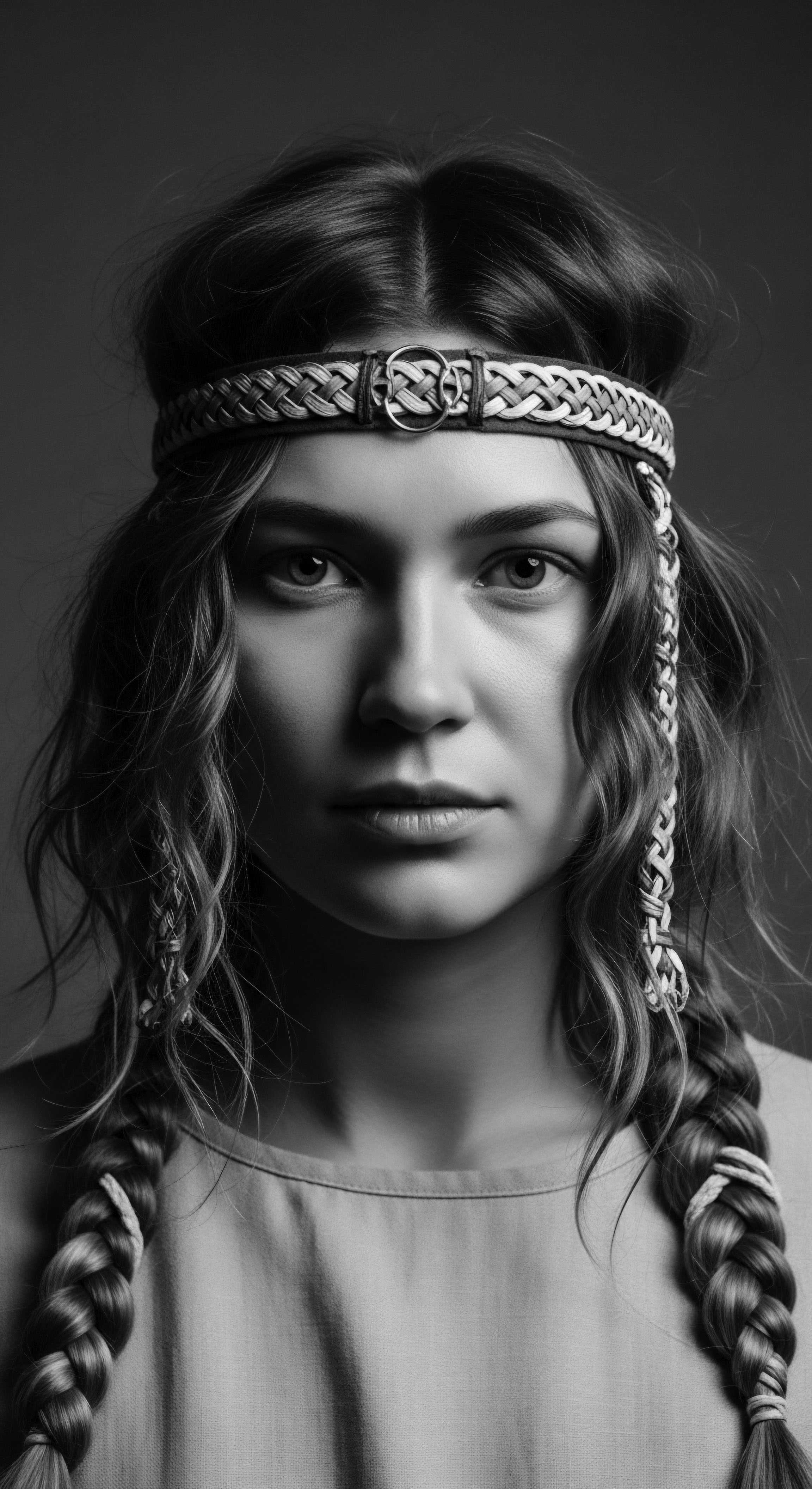
How Do Head Wraps Shield Hair From Environmental Adversity?
The mechanism by which head wraps maintain moisture for textured hair in dry climates combines simple physics with thoughtful material selection. Firstly, they act as a physical barrier. Consider the desert winds, laden with dust, and the relentless sun beating down. These elements actively strip moisture from hair, leading to dryness, brittleness, and breakage.
A head wrap intercepts these harsh realities, preventing direct exposure. Secondly, and perhaps more subtly, a head wrap creates a localized, humid micro-environment around the hair. When hair is moisturized with water-based products or natural oils before wrapping, the wrap traps this moisture, slowing its evaporation into the surrounding dry air. Fabrics like silk and satin, traditionally favored for nighttime protection, excel at this due to their smooth, non-absorbent fibers which do not draw moisture from the hair itself. This contrasts sharply with absorbent materials like cotton, which can, in fact, pull hydration away.
The selection of specific fabrics for head wraps often reflected regional availability and cultural preferences, yet the underlying principle of protection remained consistent. For example:
- Silk and Satin ❉ Valued for their smooth surface, these materials reduce friction, preventing tangles and breakage, and their non-absorbent nature helps hair retain its natural oils and applied moisture. This has been a long-standing practice for nighttime hair care across various cultures, predating its modern popularization.
- Lightweight Cotton and Linen ❉ In extremely hot, dry climates, breathable cottons were often chosen for daytime wear. While more absorbent than silk, they still offer a physical barrier against direct sun and wind, and when damp-wrapped, they could provide a cooling effect while holding some moisture.
- Mud Cloth (Bògòlanfini) ❉ Originating in Mali, these hand-dyed cotton fabrics, while not primarily used for moisture retention in the same way as silk, represent a broader heritage of textiles as protective elements. Their use often served ceremonial or social purposes, but the concept of using fabric as a shield against the elements is inherent.

Head Wraps as Cultural Markers
Beyond their practical benefits, head wraps carry immense cultural weight. In many West and Southern African societies, the style, color, and fabric of a head wrap could convey a woman’s marital status, age, wealth, or even her tribal affiliation. The Yoruba people of Nigeria, with their elaborate geles, and the Ghanaian women, with their dukus, exemplify this deep connection between adornment and identity. Even during the brutal era of enslavement in the Americas, where head wraps were sometimes forced upon Black women as symbols of subjugation, these women transformed the meaning.
They became quiet acts of defiance, ways to retain a piece of their ancestral identity and dignity amidst dehumanization. This reclamation is a powerful testament to the resilience embedded within the heritage of textured hair care. The head wrap, therefore, is not merely a piece of cloth; it is a repository of shared experience, a visible link to a past of both struggle and enduring beauty.
Head wraps, a protective shield against environmental challenges, create a localized humid micro-environment, safeguarding textured hair’s delicate moisture balance.
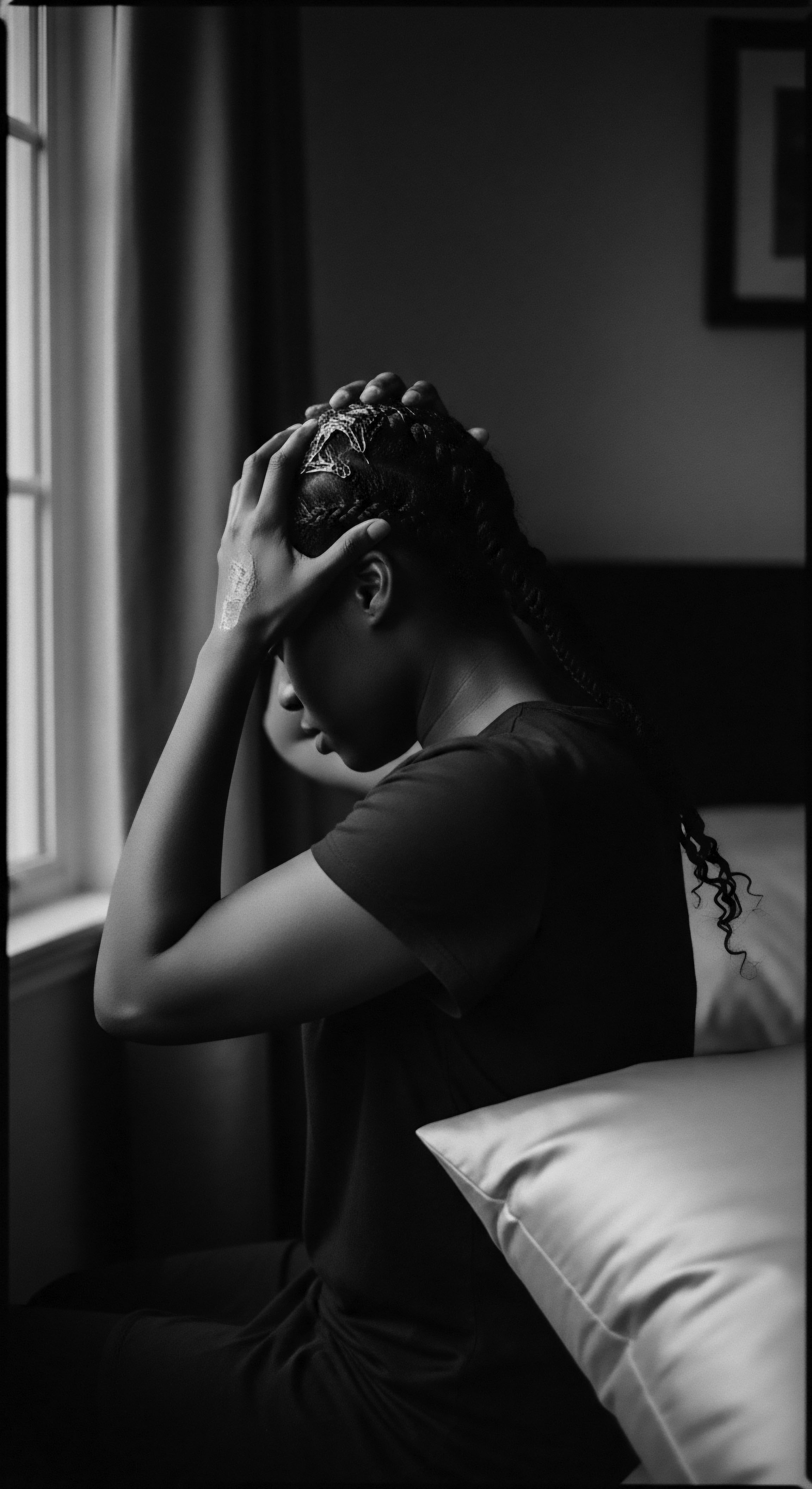
A Historical Echo of Resistance
The history of head wraps in the diaspora is intertwined with resistance. Consider the Tignon Laws enacted in Louisiana in the late 18th century, which mandated that Creole women of color wear a tignon (head covering) to suppress their elaborate hairstyles, which were seen as a challenge to racial hierarchy. Yet, these women, with their innate artistry, transformed the mandated coverings into elaborate, colorful statements of beauty and defiance, using fine fabrics and intricate tying methods. This historical example powerfully shows how a symbol intended for oppression was subverted into an expression of enduring identity and heritage, where hair, even when covered, remained a focal point of cultural pride and resistance (Byrd and Tharps, 2014, p.
57). This creative subversion of forced sartorial codes into expressions of selfhood is a testament to the adaptive spirit and deep cultural roots tied to Black hair practices, where the practical function of moisture retention often walked hand-in-hand with profound statements of being.
The ritual of head wrapping extends beyond physical protection; it embodies a holistic approach to wellbeing, where the care for one’s hair reflects a deep connection to ancestry and self. The choice to wrap, whether for daily chores or grand ceremonies, is a conscious decision to honor the hair’s inherent beauty and resilience, particularly in climates that seek to challenge its vitality.
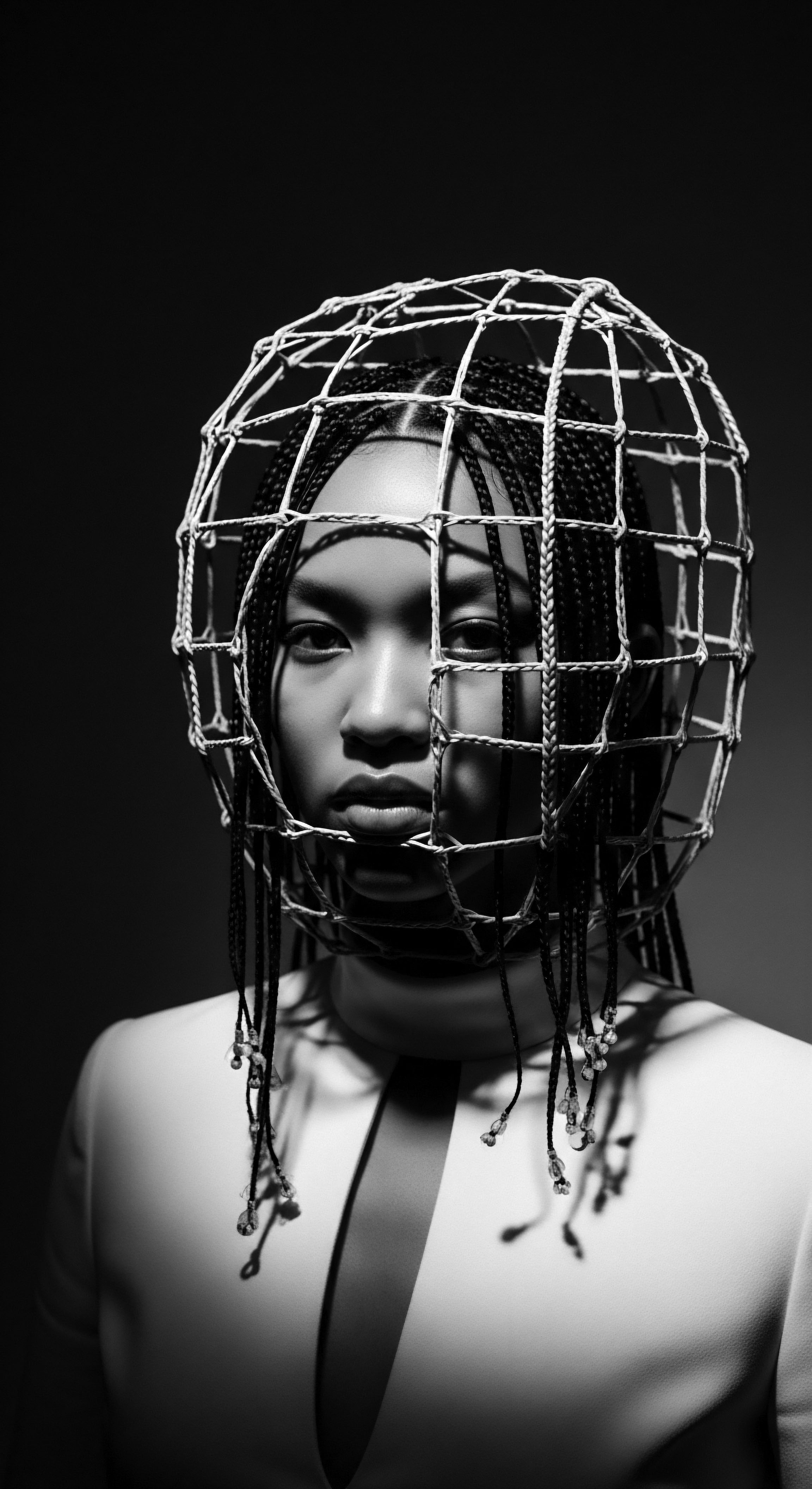
Relay
The echoes of ancestral practices reverberate through contemporary textured hair care, demonstrating a profound relay of wisdom from past to present. The understanding of how head wraps maintain moisture for textured hair in dry climates is a perfect intersection of historical ingenuity, scientific validation, and a holistic approach to wellbeing. The insights gleaned from generations who navigated parched lands now inform modern methods, emphasizing protection, preservation, and the celebration of hair’s natural state.
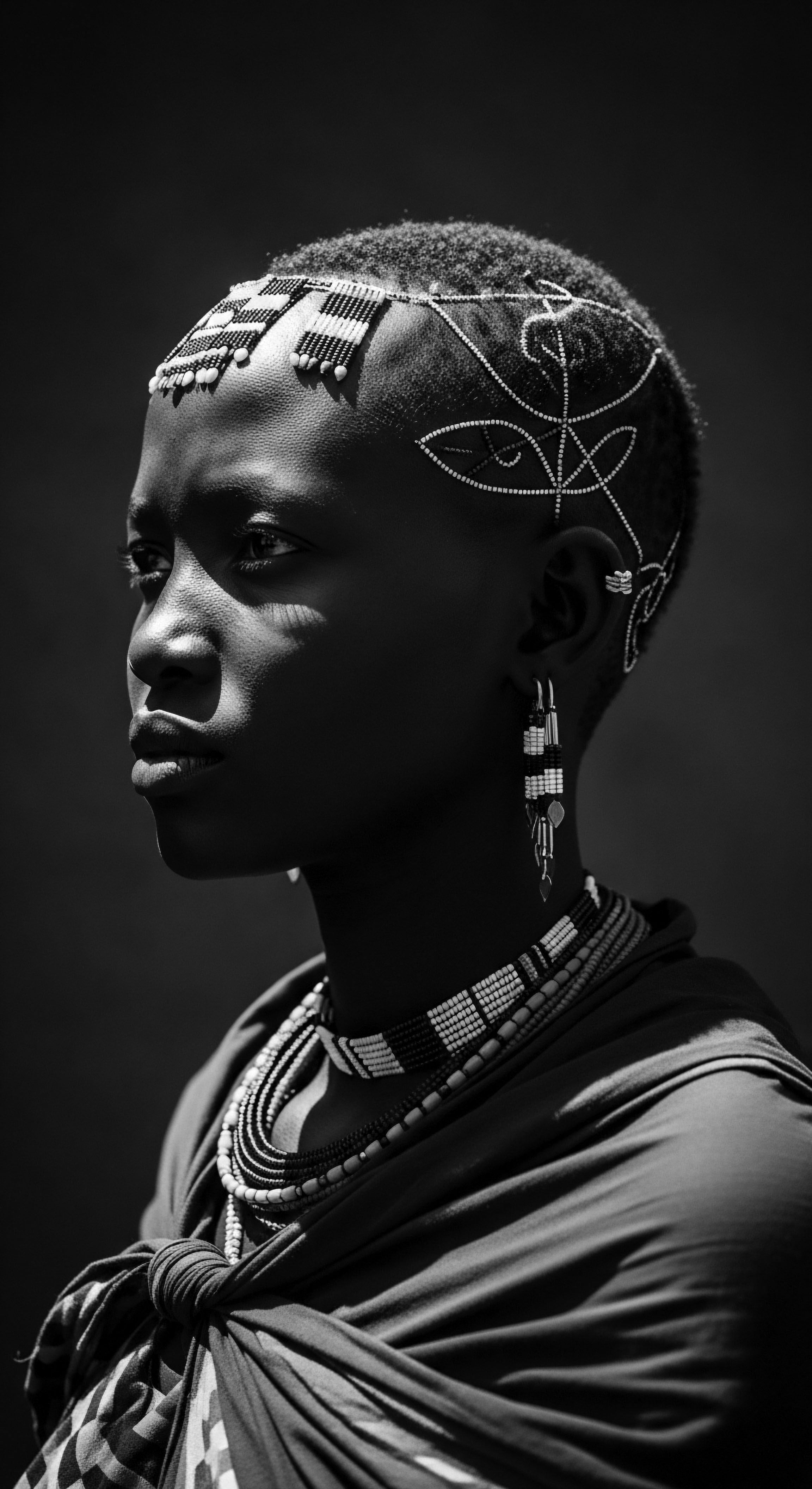
The Scientific Basis of Moisture Retention Under Wraps
The science behind head wraps’ efficacy in dry climates centers on managing the humidity gradient. Hair, like any porous material, strives for equilibrium with its environment. In dry air, water molecules rapidly leave the hair shaft, leading to dehydration, frizz, and breakage. Head wraps counteract this by creating a barrier that slows this moisture exchange.
Silk and satin, with their smooth, tightly woven fibers, are particularly effective. These materials have a low coefficient of friction, meaning they cause less mechanical stress on the delicate cuticle layer of textured hair compared to rougher fabrics. This reduction in friction helps keep the cuticle scales lying flat, thereby reducing the pathways for moisture escape. Moreover, silk and satin do not absorb moisture from the hair, unlike cotton, which is hygroscopic and can wick away precious hydration.
Consider the structure of a hair strand ❉ the outermost cuticle layers, if lifted, expose the cortex to the environment. In dry conditions, the cuticle can become brittle and fracture. A head wrap acts as an external shield, preventing the mechanical damage from wind and the dehydrating effects of low humidity that contribute to cuticle distress.
This protective microclimate allows any previously applied leave-in conditioners, oils, or creams to be absorbed more effectively by the hair shaft, rather than evaporating rapidly into the atmosphere. This is particularly crucial for textured hair, which, despite its inherent lipid content, is often characterized by dryness due to its structural properties.

What Modern Products Enhance Moisture Retention with Head Wraps?
While ancestral wisdom laid the groundwork, contemporary hair care has provided products that work synergistically with head wraps to amplify moisture retention. The understanding of occlusive agents and humectants, for instance, allows for targeted hydration before wrapping. Humectants, such as glycerin or hyaluronic acid, draw moisture from the air (or from a water-based product) into the hair.
Occlusives, like certain oils or butters, then form a protective seal over the hair shaft, locking that moisture in. When these are applied and then covered with a non-absorbent head wrap, the hair is essentially placed in a moisture-rich, low-evaporation chamber, allowing for deep conditioning and prolonged hydration.
Practical steps often involve:
- Liquid ❉ A water-based leave-in conditioner or simply water itself to provide initial hydration.
- Oil ❉ A lightweight sealing oil (e.g. jojoba, argan, or a traditionally used oil like shea butter) to create an occlusive layer.
- Cream ❉ A moisturizing cream or butter to further condition and seal.
This “LOC” method (Liquid, Oil, Cream) or its variation “LCO” is a contemporary regimen that aligns perfectly with the protective function of head wraps, ensuring hair is well-hydrated before being cocooned for optimal moisture preservation.
The scientific efficacy of head wraps in preserving hair moisture stems from their ability to create a sealed micro-environment, allowing the hair to retain vital hydration and benefit maximally from nourishing products.

Nighttime Rituals and Enduring Health
The practice of wearing head wraps or bonnets for nighttime protection has transcended centuries and continues to be a cornerstone of textured hair care. This nightly ritual is especially significant in dry climates, where the home environment can also contribute to dehydration. Cotton pillowcases, though seemingly innocuous, can create friction, leading to frizz and breakage, and absorb moisture from the hair.
Wrapping hair in silk or satin before sleep mitigates these issues, allowing the hair to glide smoothly without snagging and preserving the moisture equilibrium established during the day. This simple yet profound act safeguards the hair’s integrity, ensuring less tangling, reduced breakage, and maintained hydration, promoting healthier, longer strands over time.
This continuous relay of knowledge, from observations of the natural world to sophisticated product formulations, underscores the dynamic relationship between ancestral heritage and modern hair science. The head wrap, a simple cloth, remains a powerful symbol of this continuum, a living archive of care and resilience.
| Material Silk |
| Traditional Use/Significance Associated with royalty, special occasions; used for delicate preservation, especially overnight. |
| Modern Scientific Benefit for Moisture Low friction coefficient minimizes cuticle damage; non-absorbent fibers do not wick moisture from hair, preserving hydration. |
| Material Satin |
| Traditional Use/Significance A more accessible, smooth alternative to silk, gaining prominence for protective uses. |
| Modern Scientific Benefit for Moisture Similar to silk in its smooth surface and non-absorbent qualities, reducing friction and moisture loss. |
| Material Fine Cotton (loosely woven) |
| Traditional Use/Significance Widely available, breathable, used for everyday wear and in warmer climates. |
| Modern Scientific Benefit for Moisture Provides a physical barrier against environmental elements; allows for some air circulation to prevent scalp sweat, though more absorbent than silk/satin. |
| Material Traditional Wax Prints / Kente |
| Traditional Use/Significance Cultural expression, status symbols, ceremonial wear; often cotton or blend. |
| Modern Scientific Benefit for Moisture Offers a robust physical shield against sun and wind; when lined with silk, combines cultural expression with advanced moisture protection. |
| Material The selection of head wrap materials has always been a strategic choice, balancing cultural expression with practical hair protection, a testament to inherited knowledge. |
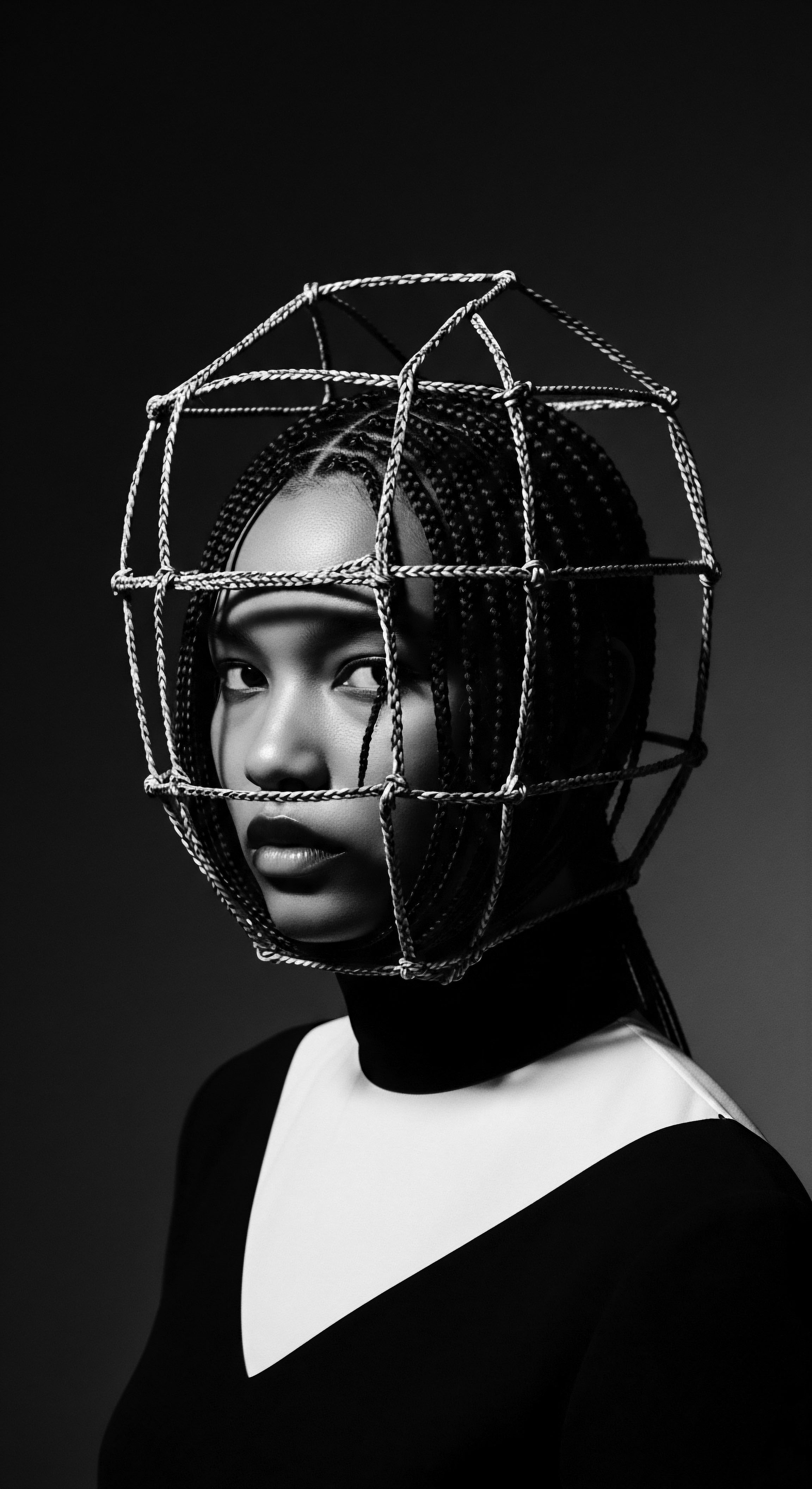
Reflection
The enduring presence of head wraps, particularly for textured hair in dry climates, stands as a radiant testament to a heritage deeply rooted in wisdom and adaptability. These coverings are not merely fashion statements; they are living testaments to ancestral ingenuity, a practice born from an intimate understanding of both hair and environment. They remind us that true hair care often finds its deepest truths in the ways of those who came before us, in rituals passed down through generations. The act of wrapping one’s hair, whether for protection from the arid air or as an expression of cultural identity, connects us to a continuous lineage of self-preservation and defiant beauty.
The head wrap, in its many forms and functions, embodies Roothea’s ‘Soul of a Strand’ ethos ❉ that each curl, each coil, carries with it the memory of a journey, a connection to a deep past, and the promise of a resilient future. It is a humble garment, yet it carries the weight of history, the warmth of community, and the silent strength of protection. As our world continues to change, the simple, profound act of donning a head wrap remains a powerful affirmation of identity, a connection to the source, and a tender act of care for the strands that tell our story.

References
- Byrd, A. D. & Tharps, L. L. (2014). Hair Story ❉ Untangling the Roots of Black Hair in America. St Martin’s Griffin.
- Robbins, R. (2012). Kinky hair. In V. Sherrow (Ed.), Encyclopedia of Hair ❉ A Cultural History (pp. 232-234). Greenwood Press.
- Jablonski, N. G. & Chaplin, G. (2014). The Evolution of Skin Pigmentation and Hair Texture in People of African Ancestry. Elsevier.
- Loussouarn, G. et al. (2005). African hair is more fragile than Caucasian hair. International Journal of Dermatology, 44(1), 11-14.
- McLeod, S. (2018). The natural hair movement and Black women’s experiences with hair. Journal of Black Studies, 49(8), 819-839.
- Shareef, S. et al. (2023). Religious headwear and alopecia ❉ considerations for dermatologists. Journal of the American Academy of Dermatology, 89(3), 569-573.
